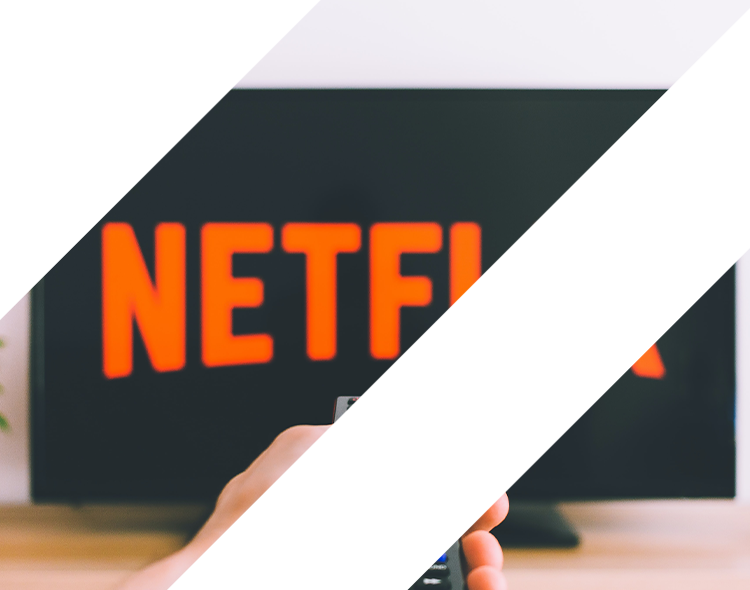Article by The Globe and Mail contributor Mahdis Habibinia | Published on May 24, 2022
Streaming services enjoyed a big boost during the first years of the pandemic, with Canadians spending more time at home, but consumers may now be headed for a case of subscription fatigue.
People flocked to streaming services when stay-at-home mandates were enacted during the health crisis. According to Forrester Research, 76 per cent of U.S. adults and 69 per cent of Canadians now use at least one music- or video-streaming site or app every week.
Newer players such as Amazon, Disney, HBO, Hulu and ESPN+ have taken on pioneer Netflix in recent years, making the field increasingly crowded. And domestic services such as Crave, Sportsnet Now and TSN Direct have added to the ever-growing list of choices for Canadians.
Inside the CinemaCon bubble, where movie theatres are back and streaming is dead
The variety of services is also expanding, as companies increasingly turn to subscription models for everything from fitness apps to audiobooks and food and grocery delivery. Canadian meal kit subscription services such as HelloFresh and Goodfood saw increased demand during the pandemic as consumers turned to delivery options rather than going to stores.
But the rapid growth of subscription services has prompted some to question whether the trend has gone too far. A recent note by Canada’s EQ Bank asked customers if they’d “hit subscription overload,” noting that the monthly cost of such services may not always be worth it.
Netflix recently forecast a loss of two million subscribers in the second quarter, a development that sent its stock plunging and added to concerns that consumers are becoming more sensitive to price hikes for discretionary services while coping with surging inflation. (Netflix has raised its prices six times since 2014.)
That’s forcing subscription service providers to explore other business models, such as Netflix’s plan to launch a lower-cost service with advertising.
“Free streaming with ads has been a faster-growing media segment for the past couple years,” said Robert Cantwell, portfolio manager at Upholdings Investments in Nashville. “There are likely too many subscription services today and not enough free streamers with ads. So you’ll see the whole industry open up its business model to both options.”
A study commissioned by Rogers Sports & Media and Tubi last year found that about 37 per cent of Canadians who pay for streaming content have three or more services – “however, at that third service mark, streamers hit subscription fatigue, and are more likely to supplement their viewing by streaming for free with ad-supported platforms.”
Against the backdrop of high inflation, people may restrict their discretionary spending. “When the prices of essentials such as groceries and gas are going up rapidly … these subscription services are vulnerable because they’re not exactly essential,” said Shane Obata, portfolio manager and executive director of investments at Middlefield Capital Corporation.
Still, video-streaming services will continue to benefit from the decline of traditional pay TV services such as cable, Mr. Obata noted. The U.S. has 69 million households subscribing to pay TV, but that’s expected to decrease to roughly 57 million by 2026. Similarly in Canada, the total number of pay TV households is expected to fall to about 7.4 million by 2023 from about 7.9 million now.
Mr. Obata said streaming will only benefit from this trend over time. “Subscriber numbers should also continue to grow as demographics change, with younger generations more likely to sign up.”
And despite Netflix’s sudden loss of subscribers, there doesn’t appear to be a general rush away from subscriptions. A recent Nielsen survey found that 46 per cent of respondents felt overwhelmed by the increasing number of streaming platforms, but 93 per cent planned to keep their subscriptions or add more in the coming year.
In the past two years, subscriptions have become a large share of consumer spending. A 2021 West Monroe survey found the monthly spend for U.S. consumers, including cellphone services, was US$273, up from US$237 in 2018. That’s roughly 5.1 per cent of household expenditures. The survey also found that people are less aware of their actual expenses for subscription services.
Laurie Campbell, the director of client financial wellness at debt relief firm Bromwich & Smith Inc., says Canadians in financial difficulty are forced to examine their subscription needs after realizing that such automated spending can throw them off their budget. Consumers often sign up for multiple services and then don’t use them, forget to unsubscribe, dismiss price hikes and fine print, and become inattentive to autorenewal features.
Ms. Campbell works with clients of all ages and says younger people are “more tech savvy but sometimes not budget savvy.” Kathryn Mandelcorn, a cash flow strategist at financial planning firm Spring Plans, advises consumers to look at their fixed expenses at least twice a year.
“If you got $100 a month going to streaming services and only using half, that’s $600 a year. Where else could that money be allocated in your life? We’re so ready to subscribe to these services, but do we do the same for ourselves and implement a monthly savings plan?”

Whether you have specific investment inquiries or general questions about Middlefield, our team would be glad to help.
Contact usDisclaimer
Commissions, trailing commissions, management fees and expenses all may be associated with mutual fund investments. Please read the prospectus before investing. You will usually pay brokerage fees to your dealer if you purchase or sell units/shares of investment funds on the Toronto Stock Exchange or other alternative Canadian trading system (an “Exchange”). If the units/shares are purchased or sold on an Exchange, investors may pay more than the current net asset value when buying and may receive less than the current net asset value when selling them. There are ongoing fees and expenses associated with owning units or shares of an investment fund. An investment fund must prepare disclosure documents that contain key information about the fund. You can find more detailed information about the fund in these documents. Mutual funds and investment funds are not guaranteed, their values change frequently and past performance may not be repeated. Certain statements in this disclosure are forward-looking. Forward-looking statements (“FLS”) are statements that are predictive in nature, depend upon or refer to future events or conditions, or that include words such as “may”, “will”, “should”, “could”, “expect”, “anticipate”, “intend”, “plan”, “believe”, or “estimate”, or other similar expressions. Statements that look forward in time or include anything other than historical information are subject to risks and uncertainties, and actual results, actions or events could differ materially from those set forth in the FLS. FLS are not guarantees of future performance and are by their nature based on numerous assumptions. Although the FLS contained herein are based upon what Middlefield Funds and the portfolio manager believe to be reasonable assumptions, neither Middlefield Funds nor the portfolio manager can assure that actual results will be consistent with these FLS. The reader is cautioned to consider the FLS carefully and not to place undue reliance on FLS. Unless required by applicable law, it is not undertaken, and specifically disclaimed that there is any intention or obligation to update or revise FLS, whether as a result of new information, future events or otherwise.
This material has been prepared for informational purposes only without regard to any particular user’s investment objectives or financial situation. This communication constitutes neither a recommendation to enter into a particular transaction nor a representation that any product described herein is suitable or appropriate for you. Investment decisions should be made with guidance from a qualified professional. The opinions contained in this report are solely those of Middlefield Limited (“ML”) and are subject to change without notice. ML makes every effort to ensure that the information has been derived from sources believed to reliable, but we cannot represent that they are complete or accurate. However, ML assumes no responsibility for any losses or damages, whether direct or indirect which arise from the use of this information. ML is under no obligation to update the information contained herein. This document is not to be construed as a solicitation, recommendation or offer to buy or sell any security, financial product or instrument.












